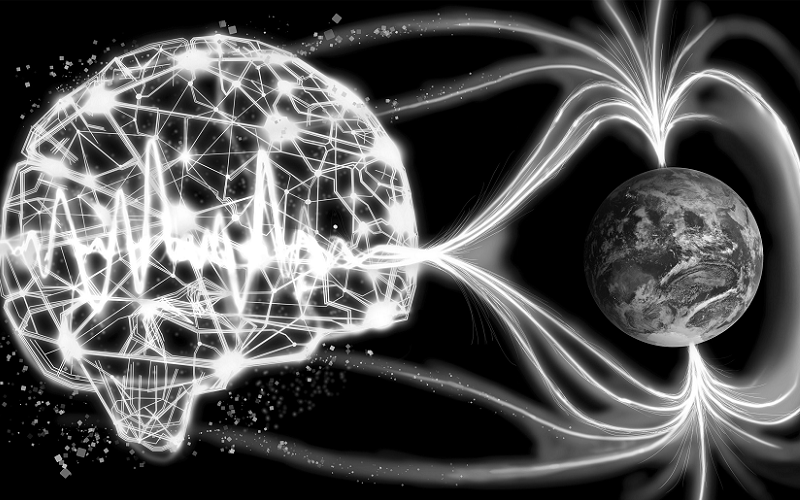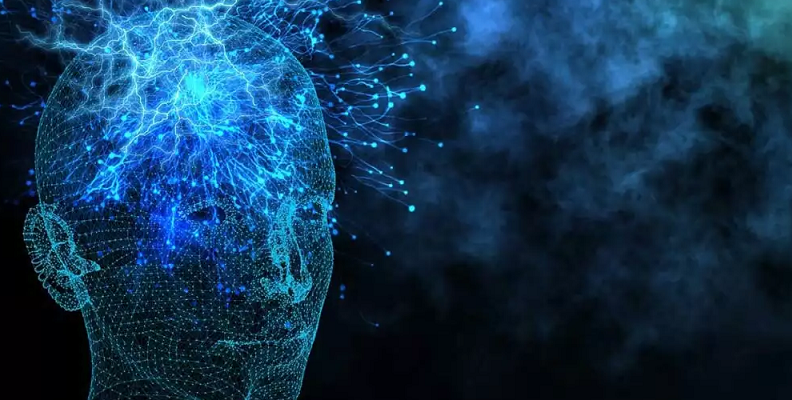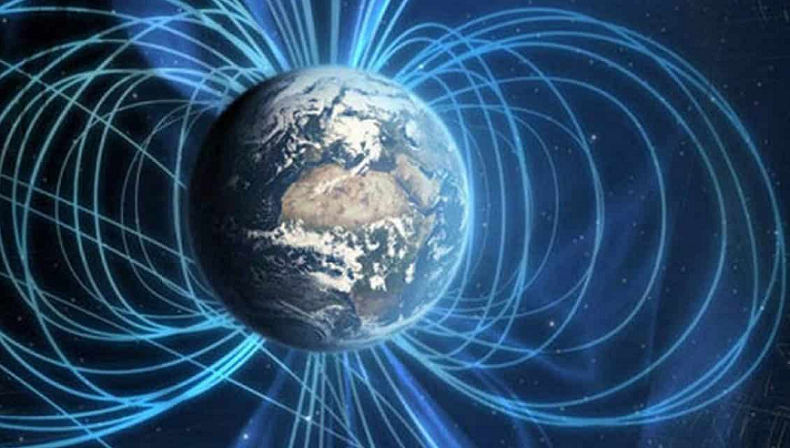
From the gentle pull that keeps our compass needle pointing north to the unseen forces guiding the migratory paths of birds, the Earth’s magnetic field exerts an astonishing influence over our planet. But could these invisible lines of force also be quietly shaping our brain’s intricate networks? The interplay between our environment and brain health has long fascinated scientists, and in this exploration, we’re diving deep into the hypothesis that Earth’s magnetic field may have a role in guiding our neural networks.
Contents
- Introduction to Earth’s Magnetic Field and Cognitive Health
- Earth’s Magnetic Field: A Primer
- The Brain’s Neural Networks
- Existing Research on Magnetic Fields and Neural Behavior
- Earth’s Magnetic Field Implications for Cognitive Health
- References
Introduction to Earth’s Magnetic Field and Cognitive Health
In a world increasingly aware of the myriad factors influencing our cognitive health, from dietary habits to mental exercises, it’s essential to continually expand our understanding of the environment’s role. Our planet provides countless stimuli, some overt and others more subtle, that engage with our biology in complex ways. Among these, the Earth’s magnetic field, a pervasive and silent force, presents an intriguing potential influencer.
Brief Overview of Earth’s Magnetic Field
Originating from molten iron currents deep within Earth’s outer core, the magnetic field extends thousands of miles into space. This protective shield deflects harmful solar radiation and cosmic rays, shaping conditions conducive to life. We’ve long utilized its consistent pull for navigation, with compasses pointing reliably north. But beyond these more visible implications, might there be subtler ways this field impacts our daily lives?
The Importance of External Influences on Brain and Cognitive Health
Every day, our brains interact with a myriad of external factors. The foods we eat, the sounds we hear, and even the light patterns we experience play pivotal roles in our cognitive well-being. Recognizing and understanding these external influencers can be key to optimizing brain health and function. Among these factors, natural phenomena like the Earth’s magnetic field, although subtle, may exert influences that we are just beginning to understand.
Introduction to the Connection between Earth’s Magnetic Field and Neural Networks
Neural networks, the intricate web of neuronal connections in our brain, play a fundamental role in everything from memory recall to emotional regulation. Their development and functioning are influenced by both internal and external factors. One such external factor might be the Earth’s magnetic field. While the exact nature of this connection is still under investigation, early research suggests intriguing intersections that merit further exploration [1].

Earth’s Magnetic Field: A Primer
Before delving into the relationship between the magnetic fields and neural networks, it’s crucial to develop a solid understanding of the Earth’s magnetic field itself. This natural phenomenon, often taken for granted, has shaped both our planetary history and our everyday experiences. By understanding its nature, origin, and functions, we can better speculate on its potential impacts on the human brain.
Definition and Properties of the Earth’s Magnetic Field
The Earth’s magnetic field, often likened to a giant magnet, is a vast area of magnetic influence surrounding our planet. Think of it as an enormous bubble, with lines of magnetic force running from the Earth’s northern magnetic pole to its southern counterpart. At its essence, this field arises from the turbulent movements of molten iron within Earth’s outer core. These movements generate electric currents, which in turn produce magnetic fields. Combined, these miniature fields give rise to the dominant field that envelops our planet.
This magnetic shield is dynamic and changes over time, with occasional pole reversals known as geomagnetic reversals. However, at any given time, it serves as a protective barrier against solar winds and harmful cosmic radiation, ensuring that our planet remains a hospitable haven for life.
Historical Perspectives on its Discovery and Importance
Human intrigue with the Earth’s magnetic field is not a recent phenomenon. Ancient mariners discovered that lodestones, naturally magnetized pieces of the mineral magnetite, would align themselves in a specific direction. This early observation led to the creation of the first compasses, changing the course of navigation forever.
Over centuries, as our understanding deepened, so did our realization of the magnetic field’s importance. Beyond mere navigation, scientists uncovered its vital role in shielding Earth from solar radiation. Without this invisible guardian, life as we know it might not have flourished on our blue planet [2].
Biological Mechanisms Affected by the Magnetic Field
Beyond its geophysical implications, the Earth’s magnetic field has been discovered to influence various biological processes. Numerous creatures, from sea turtles to certain birds, rely on this field for navigation during migrations. These animals possess magnetoreception abilities, letting them detect the Earth’s magnetic field and use it as a guide.
The exact mechanisms by which these creatures sense and interpret magnetic fields remain a topic of active research. Proposed theories range from magnetite-based sensors within cells to quantum effects in certain proteins. While our focus leans towards potential effects on human neural networks, these examples underscore the magnetic field’s profound potential to guide biological systems.

The Brain’s Neural Networks
As we pivot from the vast expanse of the Earth’s magnetic field to the intricate recesses of our minds, it’s vital to understand the complex web known as neural networks. These networks, composed of billions of neurons, form the crux of our cognitive functions. To truly appreciate any potential interaction between the Earth’s magnetic field and our brain, we first need a solid grasp of these neuronal connections.
Overview of Neuronal Connections
The human brain, an intricate marvel of nature, houses roughly 86 billion neurons. Each neuron, a specialized cell designed to transmit information, connects with thousands of others, forming a vast and complex network. These connections, known as synapses, are the sites where neurons communicate through electrical and chemical signals.
Imagine the brain as a bustling city, with each neuron representing a building. The synapses are the roads and pathways, ensuring efficient communication and transportation. This “city” works round the clock, processing information, making decisions, and storing memories, among countless other tasks.
Basics of Neural Plasticity
One of the most remarkable features of our neural networks is their ability to change and adapt—a phenomenon known as neural plasticity. Contrary to previous beliefs that the brain’s structure was fixed post-childhood, we now know that it continuously reshapes itself based on our experiences [3].
Neural plasticity can manifest in various ways:
- Formation of New Synapses: As we learn and experience, new connections can form between neurons.
- Strengthening of Existing Synapses: Repetition and practice can make certain neural pathways more dominant.
- Weakening or Pruning of Synapses: Unused or less frequently used connections may weaken or disappear, streamlining our neural processes.
Through this dynamic system, our brains can recover from injuries, adapt to new situations, and optimize for efficiency.
Factors Influencing the Development and Maintenance of Neural Networks
A multitude of factors can shape our neural networks:
- Genetics: Our DNA provides a blueprint, influencing the basic structure and predispositions of our brain.
- Experience and Learning: Active engagement and learning can mold and refine our neural pathways.
- Environmental Stimuli: Everything from the light we perceive to the sounds we hear can influence neural activity.
- Injuries and Traumas: Physical or emotional traumas can alter neural pathways, though the brain often tries to adapt or compensate.

Existing Research on Magnetic Fields and Neural Behavior
Given the profound implications of both the Earth’s magnetic field and our neural networks, it is hardly surprising that researchers have sought to uncover potential intersections. As we delve into this domain, it’s pivotal to grasp the current state of scientific understanding. Though still a burgeoning field, initial findings and studies provide tantalizing hints of the ways magnetic fields might influence neural behavior.
Magnetoreception in Birds and Other Animals
Perhaps the most compelling evidence of magnetic field influence on living organisms comes from the animal kingdom. Several species showcase behaviors that strongly suggest an inherent ability to detect and navigate using magnetic fields, a capability termed magnetoreception [4].
Birds
Many migratory birds, such as robins and pigeons, have been observed to use Earth’s magnetic field for navigation during their long journeys. Some studies suggest the presence of magnetite in their beaks or eyes, potentially facilitating this sense.
Sea Turtles
These marine creatures travel vast oceanic distances, often returning to the exact beach where they were hatched to lay their eggs. The magnetic field has been posited as a key navigation tool in these feats.
Bees
These insects, vital for pollination, have been shown in some studies to use magnetic fields in their navigation and communication.
The consistent thread in these observations is the existence of some biological mechanism, be it mineral-based or otherwise, that interacts with magnetic fields. This interaction then influences neural processes, guiding behavior.
Studies on Human Brain’s Response to Magnetic Fields
While humans might not have the overt magnetoreceptive abilities seen in some animals, there is increasing research interest in the subtle ways magnetic fields might impact our brains.
Magnetic Field Perception
Some studies have investigated whether humans can consciously perceive magnetic fields. While results are varied, there is evidence to suggest a potential, albeit weak, ability in some individuals.
Impact on Brain Activity
Various research endeavors using technologies like EEG (Electroencephalography) have explored changes in brain activity when exposed to controlled magnetic fields. Preliminary findings suggest potential modulation of certain neural patterns, though more comprehensive studies are needed.
Therapeutic Magnetic Stimulation
Techniques like Transcranial Magnetic Stimulation (TMS) utilize magnetic fields to modulate neural activity, offering potential therapeutic benefits in conditions like depression.
Potential Mechanisms of Magnetic Field Influence on Neural Networks
Given the observed behaviors and experimental findings, scientists have proposed several mechanisms by which magnetic fields might influence neural networks.
Magnetite-based Detection
Similar to some animals, there is speculation that humans might have trace amounts of magnetite in their tissues, which could interact with magnetic fields.
Ion Modulation
Magnetic fields might influence the movement of ions in and out of neurons, potentially affecting neural firing patterns.
Quantum Effects
Some researchers hypothesize that quantum effects, particularly in certain proteins, might play a role in magnetoreception and influence on neural networks.
Earth’s Magnetic Field Implications for Cognitive Health
The tantalizing connection between the Earth’s magnetic field and neural behavior beckons a broader question: What does this mean for our cognitive health? If such a pervasive environmental factor does indeed interact with our neural networks, understanding its implications could offer novel approaches to optimizing brain function and managing neurological conditions.
Cognitive Benefits and Challenges of Magnetic Field Interaction
The ongoing dance between our brain’s neural networks and the magnetic forces enveloping our planet might offer both benefits and challenges. Some speculated impacts include the following [5].
Just as birds and sea turtles use magnetic fields to navigate vast distances, subtle interactions in the human brain might enhance our spatial abilities or orientation.
Mood Modulation
As preliminary studies with Transcranial Magnetic Stimulation (TMS) have shown, controlled magnetic fields can influence mood disorders like depression. This hints at a potential natural interaction between Earth’s magnetic field and mood regulation.
Circadian Rhythm Alignment
Magnetic fields might play a role, albeit minor, in regulating our internal biological clocks, complementing light cues.
Potential Overstimulation
Just as there are potential benefits, there might also be challenges. For instance, prolonged exposure to strong artificial magnetic fields might lead to overstimulation or disruption of certain neural processes.
Potential Therapeutic Applications
Understanding the interaction between magnetic fields and neural behavior could revolutionize therapeutic approaches for various neurological and psychological conditions.
Neuromodulation Techniques
Building on techniques like TMS, future therapies might harness magnetic fields in more nuanced ways, targeting specific brain regions or pathways to treat conditions ranging from depression to Parkinson’s disease.
Cognitive Training
If magnetic fields indeed enhance certain cognitive functions, specialized training regimes might be developed to harness these benefits, aiding in everything from memory enhancement to improved spatial reasoning.
Neuroprotective Strategies
Should research prove that Earth’s natural magnetic field has protective effects on neural networks, strategies might be devised to mimic or enhance these effects, especially in environments with disrupted natural magnetic fields, like space travel.
Considerations for Future Research
As intriguing as the current findings are, the intersection of Earth’s magnetic field and cognitive health remains a nascent field, necessitating careful considerations.
Differentiating Natural vs. Artificial Magnetic Fields
As we’re increasingly surrounded by artificial magnetic fields (from electronic devices, for example), understanding their distinct impacts as opposed to Earth’s natural magnetic field is crucial.
Longitudinal Studies
To truly ascertain the effects on cognitive health, long-term studies observing changes over decades might be required.
Interdisciplinary Collaboration
Combining expertise from neuroscientists, geophysicists, and clinicians will be pivotal in gaining a holistic understanding and deriving actionable insights.
References
[1] Fast, accurate estimation of the Earth’s magnetic field for natural disaster detection
[2] Convolutional Neural Networks for Predicting the Strength of the Near-Earth Magnetic Field
[3] Magnetic Field Visualization Teaching Based on Fusion Method of Finite Element and Neural Network
[4] Neural Networks: Using Small Amounts of Data to See the Big Picture
[5] Using neural networks to study the geomagnetic field evolution

